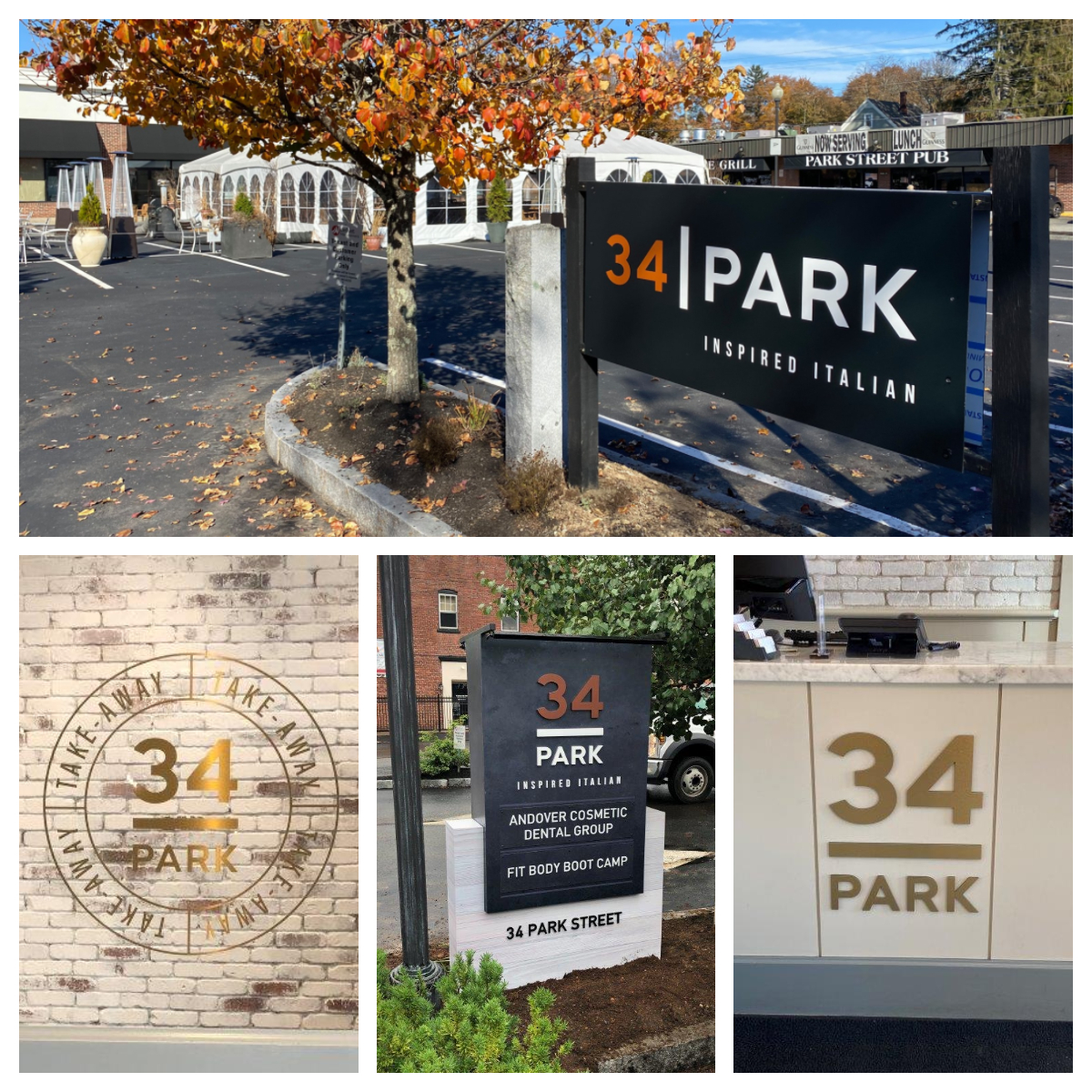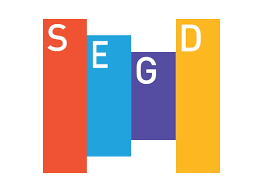Partnerships: When 1+1=3
Branding, Customer Spotlight, Design/Build, Original Posts, Partners-Developers-ContractorsThe whole is greater than the sum of the parts.
Strategic business partnerships empower companies, giving them the opportunity to grow their customer bases via referrals—a very potent strategy—and more importantly, improve their business by leveraging other’s capabilities to produce better products and services than they could on their own.
Metro often works on projects involving large corporations, financial and educational institutions, retailers, mixed-use developments, and more. It’s often on projects like these that general contractors, property developers, architects, or property managers—experts in their fields but not in signage—bring Metro in to assist.
When we’re involved early in the planning stages by partners, we can anticipate and address potential issues that those not in the signage industry might not realize are a cause for concern. And because we look at the big picture, we can predict how our signs will support and enhance the branding—whether it’s a new build, renovation, or update.
We benefit from our partners’ expertise, too, when they:
- Run point with clients and overseeing engineering or fabrication details
- Collaborate with us to develop attractive branding to attract building tenants
- Project manage a tricky installation with complex architectural elements
This month, we’re featuring insights from some of our partners — select, women-owned businesses —with whom we’ve worked to develop and enhance our customer’s unique signage.
On Partnering with Metro
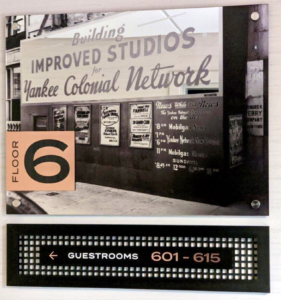
Created in partnership with Jaime Sullivan
Metro knows what it does well — and it respects its partners for what they do well, too. Both sides benefit from the relationship. As Chrissy Lebel, owner of Lebel Signs says, “I like that I do what they can’t do and vice versa. Metro’s team of graphic designers does the computer work and when they show me a rough draft of a design, I help add brand nuance to the sign to enhance it.”
Jaime Sullivan, owner of Greater Than, says the number one thing that’s most important about partnerships is mutual respect and defining clear roles and processes. “Both parties need to have clear cut action items and feel each partner provides their service, product, or ideas equally so the pendulum swings without friction.
About her partnership with Metro, Sullivan says, “I’ve always valued their team’s ability to take my ideas, add to them, and bring them to fruition. I am by no means a design engineer. Signage is a service I offer my clients to ensure their vision aligns with the overall brand package, interior design, environmental concepts and — in some cases — acts as art within a space.
“I rely heavily on Metro’s team to take my design concepts and advise me on materials, fabrication, lighting, and additional design details to bring an idea to life. They’re great at design engineering to ensure the design intent and budget align for the client. We work together to deliver innovative, beautiful, and on-budget signs.”
Becky Blizard, marketing and design specialist at Cityscapes says, “We love finding opportunities to partner with other companies, especially smaller businesses that source locally and are aligned with our own customer service orientation.
“We love how friendly and helpful Metro’s people are. Their team is always clear about timelines and expectations, they’re specific about their designs, and as collaborators, they do a fantastic job making us feel like we are part of the same team. Our botanical designers work with them on site at their Tewksbury facility. It’s amazing and gratifying to showcase each collaborator’s individual expertise to create something we couldn’t have done alone.
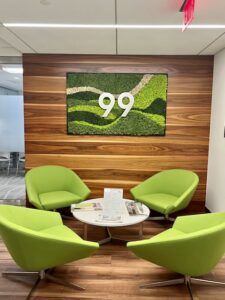
Designed in partnership with Cityscapes.
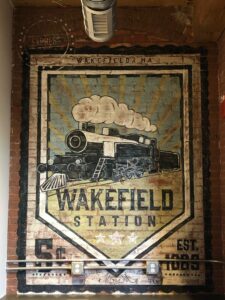
Designed by Sullivan and painted by Lebel.
On Creating a Brand
Developing a brand — whether you’re a new company or just looking to refresh an existing brand — shouldn’t happen in a vacuum.
“The right partner will listen, ask questions, and then listen some more,” says Sullivan. “My approach is to create brands that tell a much larger story than the product or service — sometimes bigger than even what the client realizes. Of course defining those things is important. But the other side of the coin is creating a brand that really speaks to the client, motivates them, and inspires their own growth.”
Lebel says, “When I’m working with a client, I like to have an in-person meeting to see where they envision the sign going. We’ll look at different designs — I bring examples for them to react to and then we fine-tune from there. For example, I might start with three lettering designs superimposed on a sign to get a preliminary feel for what they’re looking for.”
“I think it’s important to see how we can support branding and design while also showcasing the client’s commitment to sustainability as well as what aligns with our own messages and mission,” says Blizard.
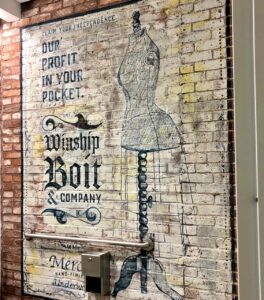
Designed by Sullivan and painted by Lebel.
On Conveying a Brand Via Signage
Signs are an essential part of a company’s marketing strategy — and signs with logos help to reinforce the brand.
“Signage is the most important billboard for your brand because without it, no one can find you! You must think about how your logos and brand marks appear on signage so it’s clear, legible, and still on brand,” says Sullivan.
“It’s important to have multiple variations of a logo, especially if your business includes a built environment. Think through all the ways you’ll need to use your logo and secondary marks. If you aren’t sure, find someone who can help create your strategy and define your brand uses. You want options to make sure your signage is on point regardless of possibilities or limitations,” Sullivan says.
Lebel says, “I remind clients to keep in mind that a sign’s shape might not work with the logo — or, when a sign is planned for a historic district, the ordinances. Sometimes it’s a challenge because what might look great on a 2D website may not translate to look good on a 3D sign. For example, super thin fonts won’t necessarily captivate nor catch the eye of passersby. I opt for keeping things bold, easy to read. Versatility is important, especially with sign shapes. So we play with messaging, logos, and different layouts.”
Strategic partnerships like those Metro has with Lebel Signs, Greater Than, and Cityscapes empowers each company to work collaboratively, leveraging individual strengths while also providing innovative solutions to customers and creating access to a broader range of opportunities. It’s a win for everyone.
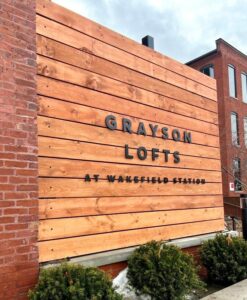
Designed in collaboration with Sullivan.
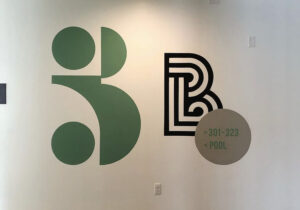
Painted by Lebel.
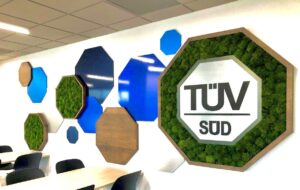
Cityscapes added the greenery for these signs designed by the Metro team.
